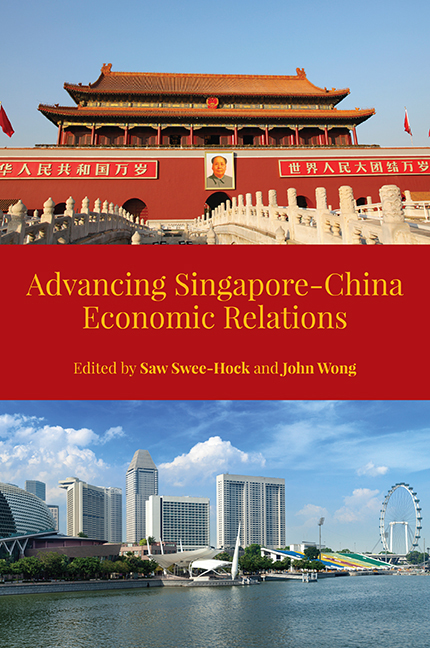Book contents
- Frontmatter
- Contents
- List of Tables
- List of Figures
- Preface
- The Contributors
- 1 Evolution of Singapore-China Economic Relations
- 2 The Political Economy of Singapore's Unique Relations with China
- 3 Suzhou Industrial Park: Going Beyond a Commercial Project
- 4 Translating Concept into Practice: Sino-Singapore Tianjin Eco-City Project
- 5 China's Foreign Direct Investment in Singapore since the 2000s
- 6 Singapore's Direct Investment in China since the 1980s
- 7 Singapore-China Trade and CSFTA
- 8 Growth of Tourism between China and Singapore
- 9 Enhancing Educational Collaborations between China and Singapore
- Index
5 - China's Foreign Direct Investment in Singapore since the 2000s
Published online by Cambridge University Press: 21 October 2015
- Frontmatter
- Contents
- List of Tables
- List of Figures
- Preface
- The Contributors
- 1 Evolution of Singapore-China Economic Relations
- 2 The Political Economy of Singapore's Unique Relations with China
- 3 Suzhou Industrial Park: Going Beyond a Commercial Project
- 4 Translating Concept into Practice: Sino-Singapore Tianjin Eco-City Project
- 5 China's Foreign Direct Investment in Singapore since the 2000s
- 6 Singapore's Direct Investment in China since the 1980s
- 7 Singapore-China Trade and CSFTA
- 8 Growth of Tourism between China and Singapore
- 9 Enhancing Educational Collaborations between China and Singapore
- Index
Summary
Introduction
China has been expanding rapidly its foreign direct investment (FDI) since 2000 when it officially initiated a ‘go global’ strategy. Starting from an insignificant volume of US$28 billion in 2000, the country has accumulated about US$425 billion FDI by the end of 2011, standing as the second-largest source of FDI among developing countries. Since Chinese FDI has reached commercially and geo-economically significant level, it has started to affect host country development and challenge international investment norms.
Singapore has been an attractive destination for Chinese FDI since 2004. According to Foreign Equity Investment in Singapore 2010, an annual survey conducted by the Singapore Department of Statistics, Chinese FDI in Singapore saw a significant jump when its total investment in the city state grew from S$360 million in 2004 to S$910 million in 2005, an increase of over 150 per cent. In 2007, Chinese investment in Singapore gathered new momentum and its stock rose fourfold to S$9.7 billion as at end-2009. By the end of 2010, the Chinese cumulative FDI in Singapore reached a high of S$11.5 billion (see Figure 5.1).
In spite of the impressive growth, Chinese investment in Singapore remains small relative to those from traditional investor countries. As at end-2010, FDI from China amounted to just 2 per cent of total FDI in Singapore, compared with 11 per cent (or S$65.4 billion) from the United States, 10 per cent (or S$60.9 billion) from the Netherlands, and 9 per cent (or S$53.9 billion) from Japan. Nevertheless, China has emerged as an increasingly important investor for Singapore and the volume of Chinese FDI to the city state is clearly on the rise. In fact, Figure 5.1 shows that China's share of FDI in Singapore grew from 0.4 per cent in 2001 to 1.9 per cent in 2010, and its share of FDI from Asian countries in Singapore rose even faster from 1.7 per cent in 2001 to 7.6 per cent in 2010.
- Type
- Chapter
- Information
- Advancing Singapore-China Economic Relations , pp. 126 - 148Publisher: ISEAS–Yusof Ishak InstitutePrint publication year: 2014



